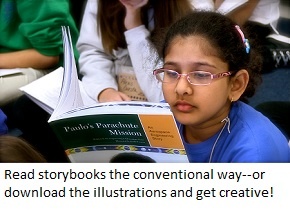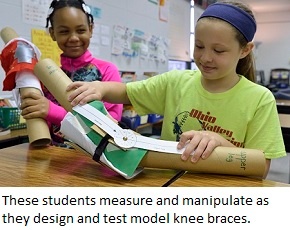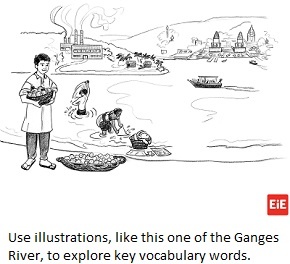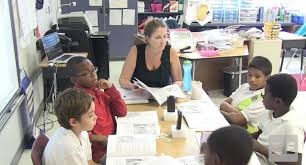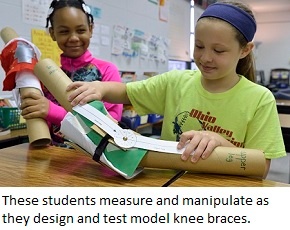 Think back to when you were in elementary school. What do you remember most vividly? Was it listening to a lecture, watching a demonstration, or filling out a worksheet? Probably not! Personally, I’ll always remember the time in fourth grade when I installed a light bulb in a cardboard box to make an incubator and hatched baby chicks for the school science fair.
Think back to when you were in elementary school. What do you remember most vividly? Was it listening to a lecture, watching a demonstration, or filling out a worksheet? Probably not! Personally, I’ll always remember the time in fourth grade when I installed a light bulb in a cardboard box to make an incubator and hatched baby chicks for the school science fair.
Engineering and English Language Arts | Tuesday, May 31
Classroom Engineering Engages Kids in Hands-on Learning
EiE Resources for Teachers | Engineering and English Language Arts | EiE Teaching Tips | Thursday, May 19
Support ELA Instruction with EiE Storybook Illustrations
Every Thursday on the blog we bring you teaching tips or news about resources you can use in your classroom
Every Engineering is Elementary (EiE) unit starts with a storybook that sets the context for the hands-on engineering design challenge. You can show the pictures to your students the conventional way, by holding up the book for everyone to see . . . but you can also download storybook illustrations from our website and project them on a screen or SmartBoard. Beyond the convenience of this approach, storybook illustrations are a terrific teaching tool for English Language Arts, and especially for the English Language Learners in your class.
Engineering and English Language Arts | Tuesday, January 26
Engage Kids in Hands-on Learning with Classroom Engineering
Think back to when you were in elementary school. What do you remember most vividly? Was it listening to a lecture, watching a demonstration, or filling out a worksheet? Probably not! Personally, I’ll always remember the time in fourth grade when I installed a light bulb in a cardboard box to make an incubator and hatched baby chicks for the school science fair.
EiE Resources for Teachers | Engineering and English Language Arts | EiE Teaching Tips | Thursday, September 10
Download EiE Storybook Illustrations and Support ELA Instruction
Every Thursday on the blog we bring you teaching tips or news about resources you can use in your classroom
Every Engineering is Elementary (EiE) unit starts with a storybook that sets the context for the hands-on engineering design challenge. And every storybook has 15 or more illustrations. During a read-aloud, you can show pictures to your students the conventional way, by holding up the book for everyone to see, or by having students follow along in their own copies. Did you know that storybook illustrations are ALSO available to download on our website? You can use a computer/projector or Smart Board to show illustrations on the big screen as you read the story.
Beyond the convenience and excitement of this approach, storybook illustrations are a terrific teaching tool for English Language Arts, and especially for the English Language Learners in your class. Stories appeal to all kids, regardless of cultural background, interests, or learning style. Instead of reading a storybook word for word, project the illustrations while you retell the story at a language level that’s appropriate for your students. Or, print them out to use in classroom activities.
Engineering and English Language Arts | EiE Teaching Tips | Thursday, July 30
Engineering Goes Hand-in-Hand with K - 5 Literacy Instruction
You'll find helpful tips for teachers every Thursday on the EiE blog.
Each Engineering is Elementary curriculum unit integrates with the science you already teach . . . starting with a storybook. For example, if your elementary students are learning about plants or insects, they'll read a storybook with an agricultural engineering theme, about a young girl who wants the exotic plant in her garden to bloom and makes a device for pollinating it by hand.
There's a good reason to start with stories: they provide an age-appropriate context for the engineering activities that follow. But you don’t have to stop with the “official” EiE storybooks. We have another terrific set of resources to support literacy instruction and reading in your classroom. Check out our Literacy Resources lists—there’s one for each of the 20 EiE units.



